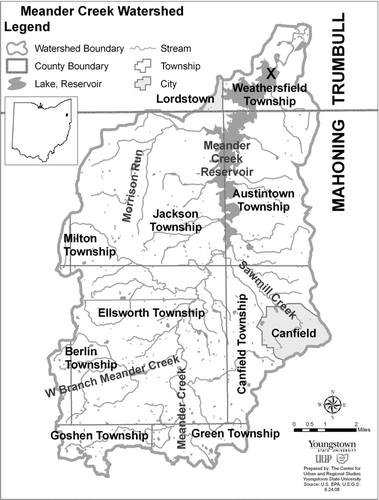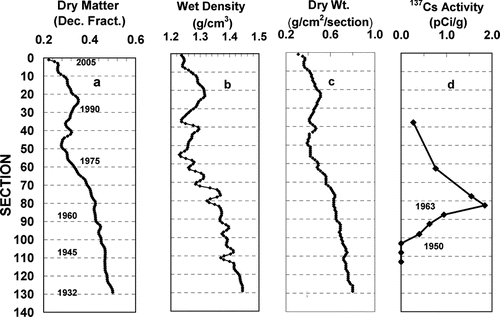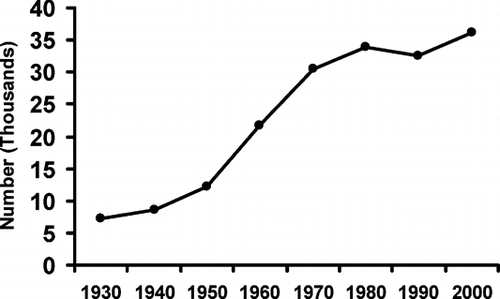Figures & data
Table 1 Occurrence of cucumber odor episodes in Meander Creek Reservoir (M. Kielbasa, Mahoning Valley Sanitary District, 2003, pers. comm.).
Table 2 Mean dry matter deposited during time intervals delineated by the 137Cs chronology (n = core section number from top of core).
Figure 3 Change in organic content, sediment particle size and diatom abundance with time of deposition. Occurrence of odor episodes are marked with an “o.”
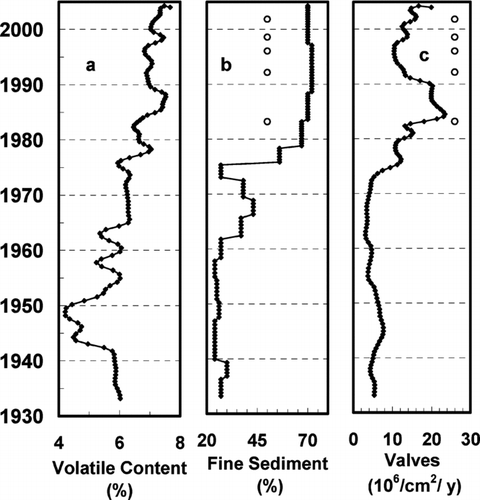
Figure 4 Change in relative abundance of diatom valves with time of sediment deposition: Occurrence of odor episodes are marked with an “o.”

Figure 5 Meander Creek Reservoir water analysis data: pH, free carbon dioxide, total alkalinity, iron, turbidity and turbidity. Data are from Mahoning Valley Sanitary District, blank space = no available data.
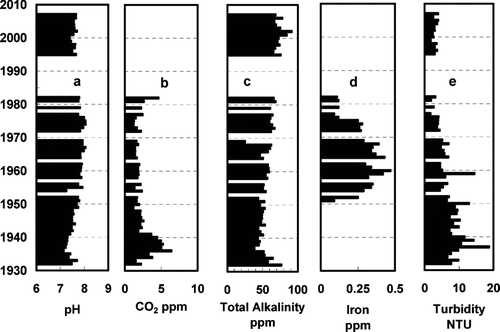
Table 3 Summary of chemical/physical data for Meander Creek Reservoir for the winter seasons of 2000–2003.
Figure 7 Factors affecting the growth of Synura petersenii in Meander Creek Reservoir (MCR): (a) change in farmland and residential area on MCR catchment; (b) estimated total phosphorus export from MCR catchment; (c) estimated suspended solids export from MCR catchment; (d) relative inferred total phosphorus (IRTP) and (e) Secchi disk transparency (sd) calculated from measured turbidity. Odor episodes are marked by an “o.”

